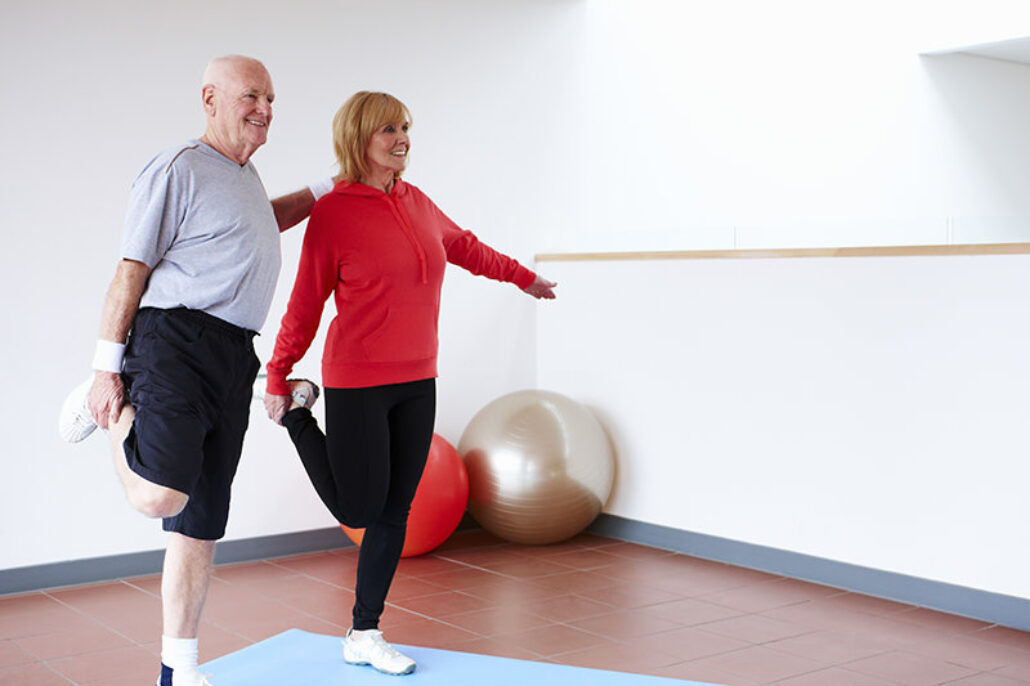Maintaining balance skills is important to stability and avoiding fall-related injuries. Physical therapist Sam Olson describes exercises everyone can do to improve their balance.
In Minnesota, good balance is a requirement to navigate slippery sidewalks during the cold winter months. Even without the challenges of ice and snow, balance is a critical component of fitness, particularly as you age. Every year, more than a third of people who are age 65 or old suffer a fall and fall-related injuries that can have a serious impact on quality of life.
Balance and strength exercises can help prevent falls by improving your ability to control and maintain body position whether you are moving or standing still.
According to Summit Physical Therapist Sam Olson, improving balance is as easy as starting with one simple exercise, and gradually making it more challenging as your balance improves.
“Start with static balance,” Sam explains. “Begin with both feet on the ground, and then lift one leg, so you are standing on a single leg. When you can hold this position for at least 45 seconds while keeping your body centered, and without too much body sway, you are ready to progress. Try balancing while turning your head or closing your eyes while you maintain a stable position on one leg.”
One you’ve mastered static balance while holding these variations for at least 45 seconds, you can progress to maintaining your balance while standing on an unstable surface like a piece of foam or a pillow. When you can balance on an unstable surface for 30 to 45 seconds, ramp up the difficulty level by closing your eyes while maintaining your one-legged position.
“Once you are comfortable balancing on foam,” says Sam, “try standing on one leg while reaching forward—displace your center of mass a little bit and get into more dynamic leg and arm movements, or what I call different functional patterns. For example, we can start with one leg up, then balance on foam, then balance while reaching out the other leg, then lean forward with one leg stretched out behind you and your arms stretched out to the sides in an airplane position. Some patients even work up to going down on one knee.”
“When I work with patients,” says Sam, “our exercise plan is based all the patient’s needs. One patient’s goal may be to walk from the front to the back of the house without tripping. Another patients may be intent on maintaining balance while running. Goals vary from patient to patient. My job is to create a plan that will help each patient reach his or her individual objective.”
A little work on balance can yield a large benefit. “For general preventative care, start with the basics of static balance, take your time, and see how much you can progress,” says Sam. “Even the basics are going to make you more stable and less prone to fall—and that, after all, is the goal.”
Summit Orthopedics offers comprehensive sports medicine expertise
From Olympians to pro athletes to kids in youth sports and those that just want to be more active—Summit Orthopedics delivers expert care by fellowship-trained sports medicine physicians. If you are recently injured or concerned about ongoing pain, Summit Orthopedics sports medicine specialists have the expertise to evaluate your discomfort and develop a plan to quickly and safely help you get back to being active.
Start your journey to stronger, healthier athletic condition. Find your sports medicine expert, request an appointment online, or call us at (651) 968–5201 to schedule a sports medicine consultation.
Summit has convenient locations across the Minneapolis-St. Paul metro area, serving Minnesota and western Wisconsin. We have state-of-the-art centers for comprehensive orthopedic care in Eagan, MN, Vadnais Heights, MN, Plymouth, MN, and Woodbury, MN, as well as several additional community clinics.

